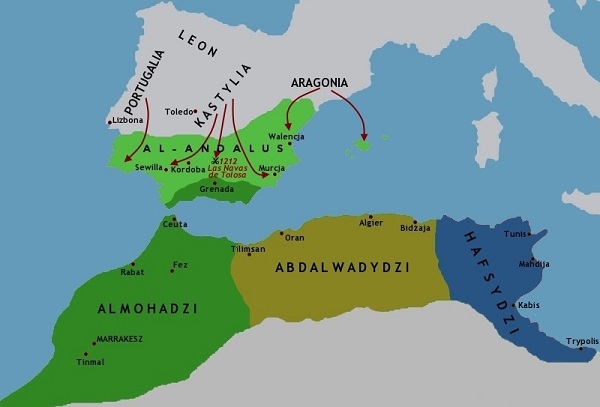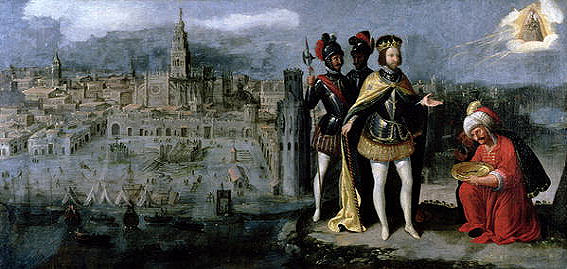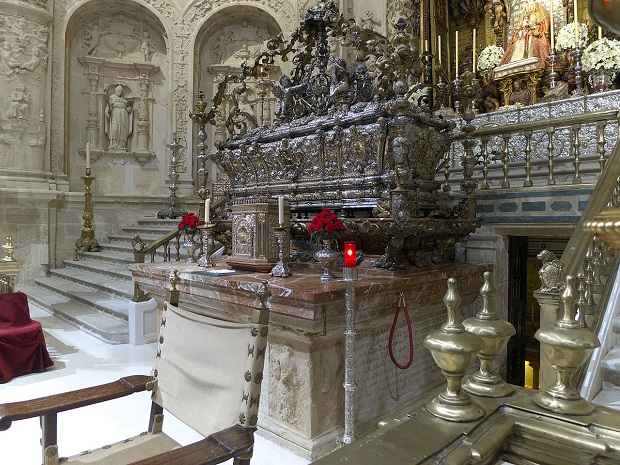By the year 1225 the Almohad regime of Marakesh had in essence lost the control of Al-Andalus, with rebel Muslim governors teaming up with Christian armies to raid and take control of the cities with Cordoba being the most significant of them. At the end of that year
King Sancho II of Portugal ordered his army to conduct raids inside the Andalusian territory that now seemed open for the taking.
The army reached Seville without a problem. The frustrated population of Seville raised a patch-up army of their own but they fell easy preys to the swords of the Portuguese who massacred as many as twenty thousand of them outside the city walls.


During the 1230’s city after city surrendered one after the other to the Christian army of
Ferdinand III of Castile. By the end of 1246 the only two Muslim strongholds left in Andalusia, were Seville and
Granada. In July 1247 the Castilian army blocked the land routes of the city to the east and north while a fleet of galleys sailed up the
Guadalquivir, crossed the chain barrier of the
Torre del Oro and destroyed the bridge that connected Seville with
Triana, completely isolating it from the rest of the world.
The city couldn’t last for long without provisions. On November 23, 1248 the Arab emir of the city, Axataf surrendered the keys of the city that are still kept in the Cathedral. On 22 December 1248 King Ferdinand III of Castile entered the emptied by Muslims city of Seville, the first Christian king to do so as a ruler in more than 500 years.
The re-population of of the city with Christians was not an easy task especially during the first years. Many incentives were given to those who dared to settle in the conquered territories of the south frontier. Many compromises were also made with the Muslims, who still lived in the rural areas since it was simply too hard to find enough people to leave their land and homes in Castile or León, Asturias and Galicia.
The task was easier with Catalans who abounded because they had participated in the conquest as crossbowmen and many of them settled in Seville as craftsmen and merchants. The Reconquista would prove to be a longer than anticipated process. When Ferdinand III died in 1252 he was buried in the former grand mosque of Yaqub Yusuf that had been turned into the new cathedral but had not yet acquired its current form.
Every year on November 23 , he is remembered in the so-called Procession of the Sword that takes place inside the Cathedral. The ceremony was established by his son Alfonso X in 1255, as a memory of his father and is still carried out by the standing mayor of the city to this day.






